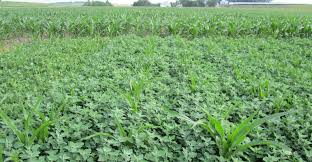Explore our blog featuring articles about farming and irrigation tips and tricks!
Harvest Weed Seed Control

By: Bob Hartzler
While herbicide resistance is not a new issue, the rapid increase in multiple resistant biotypes in waterhemp, giant ragweed, and horseweed (marestail) is limiting herbicidal options. A waterhemp biotype resistant to six herbicide groups (2, 4, 5, 9, 14, and 27) was recently identified in Missouri. The majority of Iowa fields have waterhemp resistant to three herbicide groups, and five-way resistant populations have been found. While herbicides will remain the backbone of weed management systems for the foreseeable future, it should be clear that additional tactics are needed. This article focuses on alternative strategies that fit our current cropping system, with an emphasis on harvest weed seed control (HWSC). While none are as easily adopted as changing herbicide programs, they will be essential for preserving herbicides as effective management tools.
Identifying weak links in a weed’s life cycle
Summer annuals are the dominant weed problem in the corn-soybean rotation since these pests establish and mature at the same time as the crops. The annual life cycle has several distinct stages, the success at transitioning between these stages determines whether a weed increases or decreases within a field (Figure 1). Population dynamic models allow researchers to investigate how control tactics targeting different ‘choke points’ influence the long-term success or failure of a weed.
Stay up to date on all T-L news and get alerts on special pricing!


